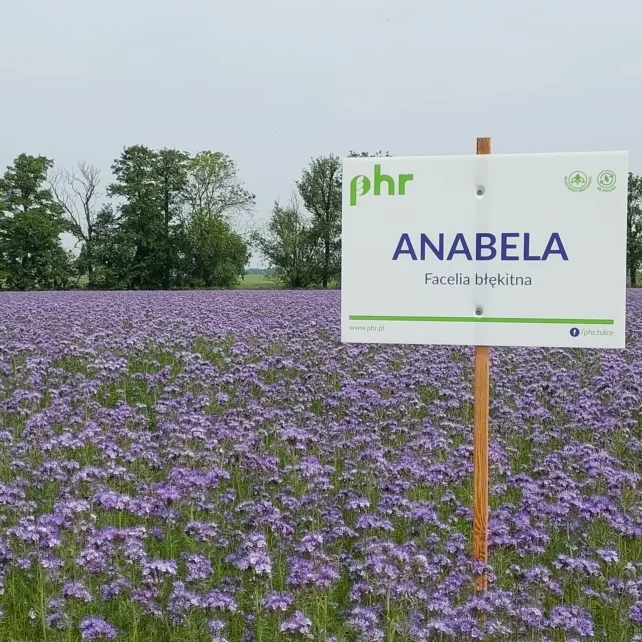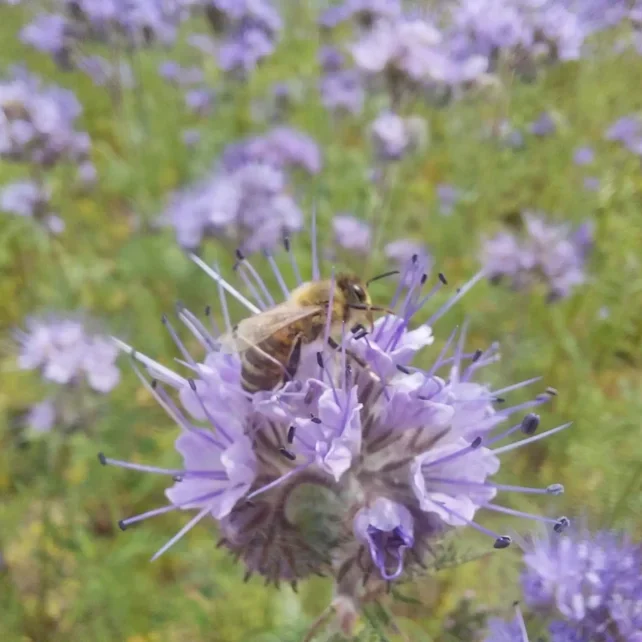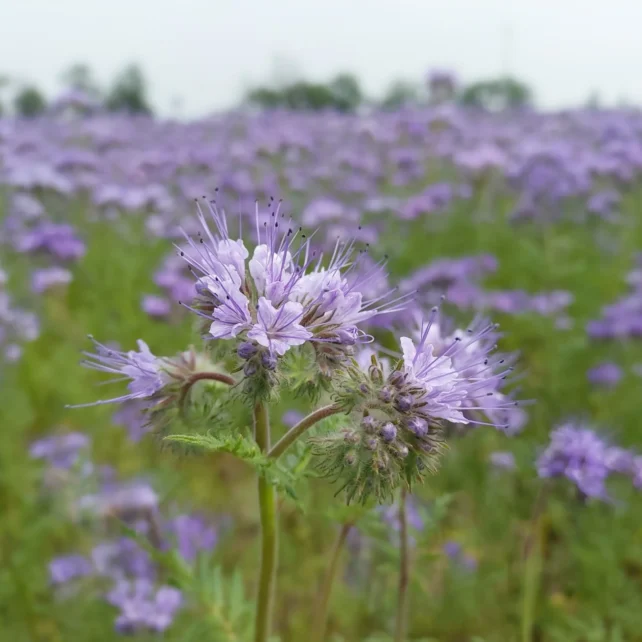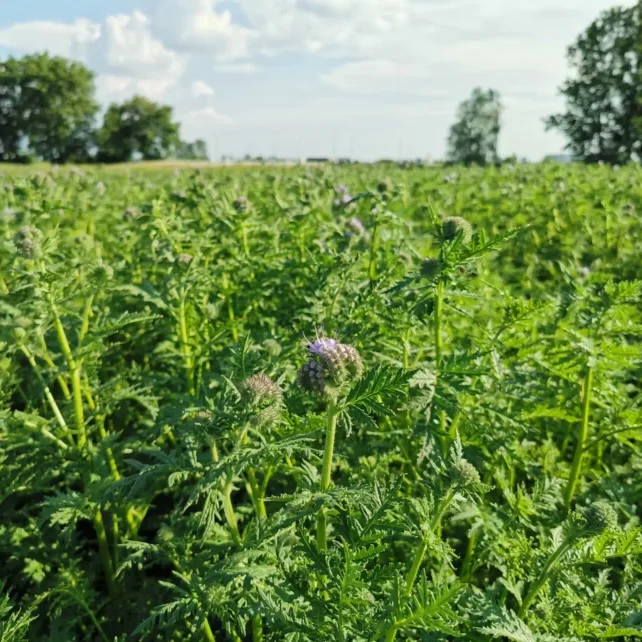Phacelia Anabela


Special features of phacelia Anabela
- The new variety of blue phacelia is particularly suitable for cultivation in stubble intercrops, has a very favorable effect on the phytosanitary status and soil culture. It reduces the nematode population by 15-20%.
- Very valuable melliferous crop – Anabela is the “queen” of melliferous crops; you can get more than 400 kg of honey per hectare.
Other information
• High fresh and dry matter yield and very high seed yield.
• High growth rate – fast soil shading and weed suppression.
• Medium-early variety; plant height is approx. 70-80cm.
• Relatively low soil requirements, short growing season and good tolerance to periodic water shortages and frosts down to -8°C.
• Suitable for cultivation in organic farming for sowing arable land temporarily out of production.
• It matures unevenly – desiccation before harvesting is recommended. Harvested seeds should be dried very quickly.
• Fine seeds with low TSW.






Previous image
Next image

